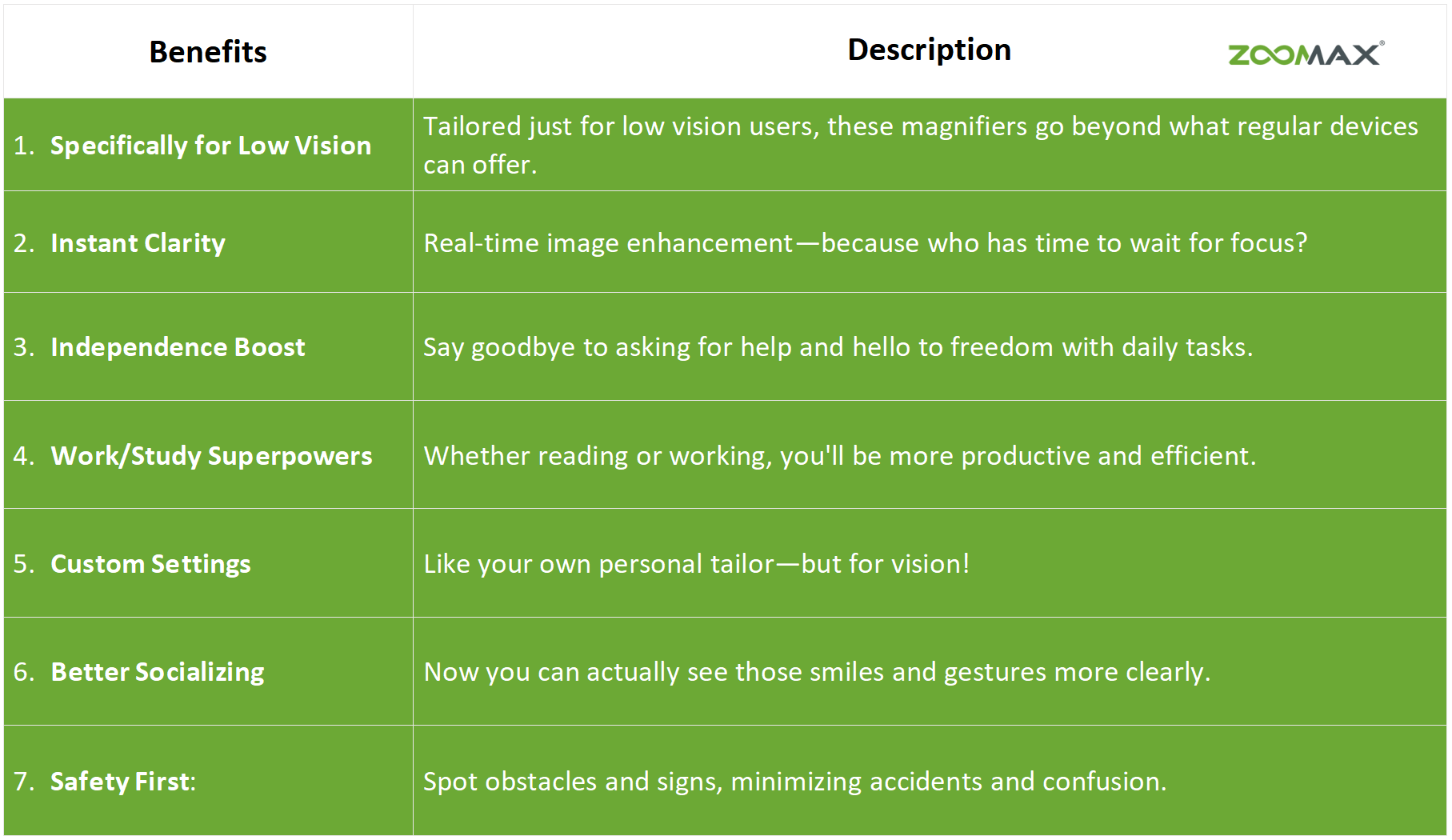Data and Studies on Electronic Magnifiers
According to a 2020 study by the American Foundation for the Blind, more than 80% of low vision patients reported improved quality of life and greater independence after using electronic magnifiers (American Foundation for the Blind, 2020). Additionally, the World Health Organization estimates that 1.3 billion people worldwide experience some form of visual impairment, with many benefiting from low vision aids like electronic magnifiers (World Health Organization, 2021).
What Are Electronic Magnifiers?
Electronic magnifiers, also known as low vision magnifiers or low vision aids, are advanced devices specifically designed to assist individuals with low vision. These tools use digital technology to magnify, enhance, and optimize visual information, providing support to those who cannot achieve clear vision with traditional glasses or magnifiers. Widely used in daily life, education, and work, they help users regain independence and confidence. For a more detailed definition, refer to this article on electronic magnifiers.
How Do Electronic Magnifiers Work?
The core working principle of electronic magnifiers involves image capture, processing, and display, providing enhanced visual experiences for low vision users. While digital cameras may share similar features, electronic magnifiers are designed specifically to meet the unique needs of low vision individuals, offering far superior performance for this audience.
1. Image Capture: Precision Beyond Ordinary Cameras
The cameras used in electronic magnifiers are not just standard HD cameras but are specially optimized optical sensor systems. These systems can capture high-quality images even in challenging lighting conditions, recognizing subtle light variations that the human eye may not detect. This ensures that electronic magnifiers provide clear visuals for low vision users, even in environments with poor lighting or complex shadows.
2. Image Processing: Algorithms Tailored for Low Vision
Image processing is the core of an electronic magnifier. Unlike standard cameras that focus on making images aesthetically pleasing, electronic magnifiers use algorithms designed specifically to enhance visual perception for low vision patients. These algorithms adjust contrast, brightness, and color in real-time to highlight important details, such as emphasizing the edges of text to make it easier for users to read.
3. Image Display: Ultra-High-Definition Screens
The display technology in electronic magnifiers uses high-resolution screens combined with anti-glare and high-brightness materials to deliver clear images in any lighting conditions. Users can adjust contrast, brightness, and color to their specific needs, and even at high magnifications, the image retains its sharpness and detail.
4. Image Magnification: Multi-Dimensional Visual Enhancement
The magnification technology in electronic magnifiers is more sophisticated than the simple “zoom” functions found in ordinary digital cameras. These devices provide a wide range of magnifications—from a few times to dozens of times—while maintaining image clarity, even at high magnification levels. This enables users to see fine details like text and objects that would otherwise be too small to discern.
Additionally, electronic magnifiers offer region-specific magnification, allowing users to zoom in on certain parts of an image while maintaining visibility in other areas. This is particularly useful for tasks that require attention to multiple visual elements at once, something ordinary digital cameras cannot provide.
Advantages and Benefits of Electronic Magnifiers
Electronic magnifiers offer a combination of unique technological advantages and life-enhancing benefits for low vision users:

Frequently Asked Questions (FAQs)
What is the difference between an electronic magnifier and a standard magnifying glass?
Electronic magnifiers offer digital magnification, enhanced contrast, and customizable settings, allowing for a more precise and clearer visual experience than a traditional magnifying glass.
Are electronic magnifiers covered by insurance?
In some cases, electronic magnifiers may be covered by health insurance, particularly if prescribed by an ophthalmologist as a medical necessity. Coverage availability depends on the country. For detailed information on policies and subsidies in the U.S., Canada, and the U.K., see this comprehensive guide on global policies. For countries like Australia, Germany, France, Spain, and Italy, refer to part 2 of the guide.
Can children use electronic magnifiers?
Yes, many electronic magnifiers are designed for all age groups. They can be particularly useful for children with low vision in educational settings.
References
American Foundation for the Blind. (2020). Study on electronic magnifiers and low vision aids impact. American Foundation for the Blind. https://www.afb.org/research
World Health Organization. (2021). Global data on visual impairments and the role of low vision aids. World Health Organization. https://www.who.int/news-room/fact-sheets/detail/blindness-and-visual-impairment







